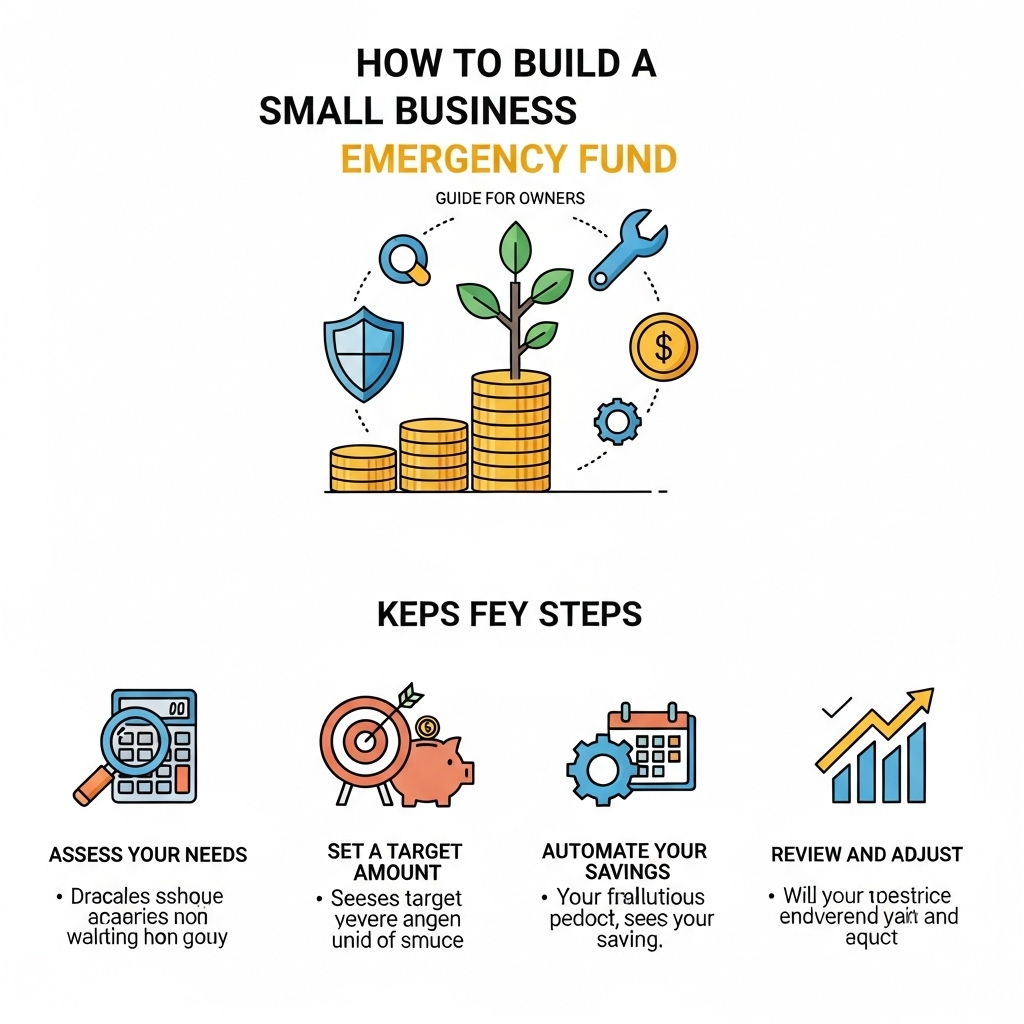A Practical Guide for Owners
Running a small business is an adventure filled with opportunity—yet it’s also unpredictable. Economic shocks, supply chain hiccups, or even a slow-paying client can turn a good month into a tough one overnight. That’s why a business emergency fund isn’t just a “nice-to-have”—it’s essential protection for your hard-earned progress.
Why Every Small Business Needs an Emergency Fund
Think of an emergency fund as your business’s safety net. It helps you:
- Maintain cash flow during disruptions—so you can keep the lights on and payroll running even when revenues dip.
- Avoid high-interest debt—by reducing dependence on costly loans or credit cards.
- Protect employees and operations—ensuring you can meet your obligations without drastic measures.
Without this cushion, you might find yourself scrambling for expensive loans or making hard choices that could set your business back.
Step 1: Determine How Much You Need
A good rule of thumb is to save three to six months of operating expenses. For most businesses, this means tallying up rent, payroll, utilities, inventory, and other recurring costs. For example, if your monthly expenses average $10,000, aim for an emergency fund between $30,000 and $60,000.
However, your target may vary based on your industry, business model, and risk tolerance. Service businesses with low overhead might need less, while retailers or manufacturers with high inventory costs may need more.
Step 2: Set a Realistic Savings Goal
Once you know your target, break it into manageable monthly goals. If your target is $36,000 and you want to build the fund in a year, set aside $3,000 each month. Adjust as needed—some months may be leaner, while others bring unexpected windfalls.
QuickBooks Example
Use QuickBooks to review your monthly expense reports and identify your average operating costs. Set up custom reports to track how much you’re saving toward your emergency fund each month. QuickBooks’ budgeting tools can also help you project how quickly you’ll reach your target based on your current savings rate.
Step 3: Open a Dedicated Emergency Fund Account
Keep your emergency fund separate from your primary operating account. Choose a business savings account—ideally one with a higher interest rate. This reduces the temptation to dip into these reserves for everyday expenses and keeps your safety net growing steadily.
Automate monthly transfers from your primary business checking to your emergency fund. Many online banking platforms integrate directly with QuickBooks, making it easy to schedule and track these transfers.
Step 4: Make Consistent Contributions
Consistency is key. Treat your emergency fund contribution like any other recurring expense. If you land a big project or experience a seasonal surge, consider allocating a portion of that extra income to your fund. Conversely, if a tough month forces you to skip a deposit, catch up as soon as possible.
Step 5: Review and Adjust Regularly
Your business isn’t static—your emergency fund shouldn’t be either. Review your fund at least annually or whenever significant changes occur, such as expansion, hiring, or shifts in revenue. Use QuickBooks to analyze trends and adjust your target as your business evolves.
Mistakes to Avoid
- Underestimating your needs: Don’t just save for best-case scenarios. Plan for the unexpected—major repairs, sudden revenue drops, or delayed client payments.
- Using emergency funds for non-emergencies: Tap these reserves only for true emergencies, not for routine shortfalls or non-critical investments.
- Neglecting to replenish: If you use your emergency fund, make a plan to rebuild it promptly.
How a Fractional CFO Can Help
A fractional CFO (Chief Financial Officer) is a part-time financial expert who provides strategic guidance without the full-time expense. They can:
- Analyze your business’s cash flow to help you pinpoint the ideal emergency fund size.
- Build customized financial models using QuickBooks data to forecast your fund growth.
- Recommend efficient cash management strategies, such as optimizing payment terms or renegotiating supplier contracts.
- Set up monitoring systems so you’re always alert to early warning signs and can act before a cash crisis hits.
Fractional CFOs bring outside expertise and an objective eye, ensuring your emergency plan fits your unique business needs.
Practical Example
Imagine you run a creative agency with $20,000 in monthly expenses. You consult with a fractional CFO, who uses QuickBooks to analyze your expense trends and client payment cycles. Together, you decide to build a $60,000 emergency fund over 18 months by setting aside $3,333 per month. You open a dedicated savings account, automate transfers, and use QuickBooks to track progress. When a key client delays payment for 45 days, your emergency fund bridges the gap—no layoffs, no high-interest loans.
Conclusion: Secure Your Business’s Future
Building an emergency fund isn’t just smart—it’s a foundation for resilience and peace of mind. Start small if you must, but start today. Leverage tools like QuickBooks to automate and track your progress, and don’t hesitate to seek help from a fractional CFO to maximize your strategy. By making your emergency fund a priority, you’ll position your business to weather storms and seize new opportunities—no matter what the future holds.
Ready to Take Control of Your Business Finances?
Don’t let outdated beliefs or a lack of oversight put your business at risk. By combining innovative technology, sound legal structure, and expert financial guidance, you’ll build a compliance watchdog that protects your company and your peace of mind. The proper support means every expense is accounted for—no matter who’s making the purchase—and nothing ever “slips through.”
By investing in professional financial guidance, you’re not just preparing for a sale. You’re creating peace of mind, stability, and options for yourself and those who matter most.
Don’t wait for “someday.” Start building your sellable business today.
Like this article? Get in Touch!




